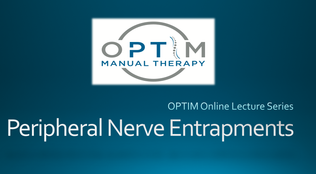 Five years ago, I was diagnosed with right Venous Thoracic Outlet Syndrome. My 11-hour surgery entailed a first rib resection, subclavian vein graft, A-V fistula, and removal of my anterior and middle scalene muscles. Since the surgery, I have been doing great. I have resumed all activities with minimal shoulder pain or discomfort (as long as I perform routine corrective exercises for the shoulder girdle). I continue to have mild upper extremity swelling, which is gradually improving. My subclavian vein graft did not accept, so my collateral circulation has taken over. As my surgeon explained, "the main highway for blood transport is gone, so all the other side roads are taking over." Fast forward 5 years.... Four weeks ago I began experiencing right medial elbow pain with the sensation of swelling. Going through my differential diagnosis, I did not present with any symptoms of medial epicondylagia, very mild numbness and tingling, no neck pain, and no shoulder problems. The pain did not appear purely musculoskeletal, so I began getting nervous about the symptoms. After all, the last time I had right arm symptoms, the result was a 4" blood clot in my subsclavian vein. My brain immediately was flooded with thought viruses regarding potential causes of the problem.
Image explaining potential causes of peripheral nerve entrapments In conclusion, the nervous system can create interesting signs and symptoms that may not appear musculoskeletal in nature. Additionally, always remember the patient's past medical history, recent change in activity status, and peripheral nervous system anatomy.  Interested in learning more about Peripheral Nerve Entrapments? The OPTIM online lecture series recently created a lecture on Peripheral Nerves. The lecture covers understanding basic nerve anatomy and function of the nervous system; identifying potential causes of peripheral nerve entrapments; differentiating between lower extremity nerve entrapment and lumbar radiculopathy; Demonstrating the ability to find, palpate, and treat lower extremity peripheral nerves dysfunction.  Author: Jim Heafner PT, DPT, OCS Jim teachers for the OPTIM COMT program in Scottsdale, AZ. He is owner of Heafner Health in Boulder, CO & one of the authors of The Student Physical Therapist
0 Comments
Leave a Reply. |
Details
ContactEmail Good readsCategories |


 RSS Feed
RSS Feed